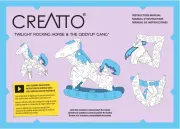Thames & Kosmos Ingenious (2nd Edition) Handleiding
Thames & Kosmos
Niet gecategoriseerd
Ingenious (2nd Edition)
Bekijk gratis de handleiding van Thames & Kosmos Ingenious (2nd Edition) (8 pagina’s), behorend tot de categorie Niet gecategoriseerd. Deze gids werd als nuttig beoordeeld door 5 mensen en kreeg gemiddeld 4.8 sterren uit 3 reviews. Heb je een vraag over Thames & Kosmos Ingenious (2nd Edition) of wil je andere gebruikers van dit product iets vragen? Stel een vraag
Pagina 1/8

1
Note: The duel game score boards and the duel game tokens are needed only for the duel game variant.
GAME OVERVIEW
Each player has six tiles with colored symbols on their tile
rack. In clockwise order, each player places one of their tiles
onto the gameboard, covering two empty hexagonal spaces,
with the objective of extending lines of identical colored
symbols matching the placed tile. For each line of symbols
that is extended, the player scores points and advances the
corresponding colored score peg on their score board. Players
must try to advance all six of their score pegs, not leaving any
one of them behind. When the gameboard is completely filled
with tiles, each player’s lowest-scoring peg indicates the player’s
final score. The player with the final score wins.highest
GAME MATERIALS
TABLE OF CONTENTS
Game Overview 1 ................................................
Game Materials 1 ................................................
Standard Game for Two to Four Players 2 .......
Game setup 2 ...................................................................
Gameplay 2 .......................................................................
End of the game ........................................................... 5
Game Variants ................................................. 6
Solo game for one player 6 ............................................
Team game for four players 6 ........................................
Duel game for two players ............................................ 7
START PLAYING
WITHOUT READING
THE RULES!
with the free
Helper App
For an animated tutorial explaining
the rules of this game, scan the QR
code above to download the free
Kosmos Helper App. See the app
stores for details.
For 1-4 players, ages 8 years and up
120 Tiles
(each with 2
colored symbols)
24 Score pegs
(4 sets, each set
containing 1 each
of red, orange,
yellow, green, and
blue pegs)
1 Fabric bag 1 Gameboard4 Tile racks
6 Duel game tokens
4 Score boards
Back
(Duel game score board)

2
STANDARD GAME FOR TWO TO FOUR PLAYERS
Game setup
1. gameboard Place the in the center of the table.
2. Mix up the tiles in the fabric bag well and place the filled bag next to the gameboard.
3. one tile rack Each player places in front of them, draws from the bag, and places them on their tile rack such that no six tiles
other players can see them.
4. one score board Each player places in front of them such that it is visible to all players. Each player places one score peg of
each color in the holes to the right of the corresponding colored symbols on their score board (red score peg in the “0” space of
the row with the red star and so on). Return any remaining score boards and score pegs to the box.
Gameplay
The youngest player starts. Players take turns in clockwise order. When it is your turn, take the following three actions:
1. Place a tile on the gameboard.
2. Score the colored symbols on this tile (and perform a bonus placement if applicable).
3. Replenish your rack to six tiles.
Example setup for a four-player game

3
1. Place a tile on the gameboard
At the start of your turn, choose any tile from your rack and place it on two empty adjacent hexagonal
spaces on the gameboard. An empty space is a space with no colored symbol, whether printed on a
tile or on the gameboard.
When placing tiles, you must stay within the determined by the number of players: boundary
In a two-player game, players may place tiles only on the white spaces.
In a three-player game, players may place tiles only on the white and light gray spaces.
In a four-player game, players may place tiles on all of the spaces.
On your rst turn, you must place your tile next to a colored symbol printed on the gameboard that
has no other tile adjacent to it.
From your second turn on, you can place your tile on two empty spaces on the gameboard. You any
do not necessarily have to place your tile next to a matching colored symbol on other tiles or on the
gameboard, or even adjacent to tiles at all. It is also allowable for single empty spaces to be created
when placing a tile.
Important: When it is your turn, you place a tile — even if you cannot score any points.must
2. Score the colored symbols on this tile
You score points when one or both of the colored symbols on your newly placed tile match adjacent colored symbols (printed on other
tiles or on the gameboard itself). When doing this, you determine the score of colored symbols of the newly placed tile — even if both
the tile has two of the same colored symbol. First, you determine your score for one of the colored symbols on the tile and advance the
score peg of the same color on your score board accordingly. Then, you do the same for the other colored symbol. You can choose the
order in which you score the two colored symbols.
Once you have placed your tile on the gameboard,
each of the two colored symbols on it is now
adjacent to (unless the ve hexagonal spaces
tile is placed at the edge of the boundary, in
which case there are fewer than ve). These ve
adjacent spaces now indicate the ve scoring
directions. The space occupied by the other
colored symbol on the newly placed tile is not
considered an adjacent space for the colored
symbol you are currently scoring.
Now, for each of the ve scoring directions, count
how many matching colored symbols are adjacent to the colored symbol on your newly placed tile in a straight line without a
break. In other words, stop counting as soon as you come to an empty space or a differently colored symbol, which are considered
breaks in a line of matching colored symbols. You score colored symbol that matches the colored symbol on the one point for each
newly placed tile. Do not count the symbol on the tile you just placed toward this point total!
Important: not Since the other colored symbol on the same tile is considered adjacent, you do not get any points in that direction,
even if it is a matching symbol.
Once you have determined your score for both colored symbols, check to see whether you have earned a (page 4) bonus placement
before proceeding with tile replenishment.
Example
To determine the score for the blue
star, check if there are adjacent and
matching colored symbols in the
upper left, upper right, right, lower
right, and lower left directions. To
the left, in the direction of the yellow
star, which is the other symbol on this
newly placed tile, nothing is scored.
Product specificaties
| Merk: | Thames & Kosmos |
| Categorie: | Niet gecategoriseerd |
| Model: | Ingenious (2nd Edition) |
Heb je hulp nodig?
Als je hulp nodig hebt met Thames & Kosmos Ingenious (2nd Edition) stel dan hieronder een vraag en andere gebruikers zullen je antwoorden
Handleiding Niet gecategoriseerd Thames & Kosmos

6 Augustus 2025

6 Augustus 2025
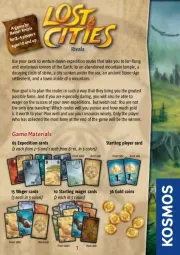
6 Augustus 2025

5 Augustus 2025

5 Augustus 2025
Handleiding Niet gecategoriseerd
- Rega
- Lofrans
- Princess
- Integral
- SLV
- BEA
- Lego
- Maxell
- Softron
- Epson
- Kunath
- Lupine
- Schellenberg
- Cressi
- Ewent
Nieuwste handleidingen voor Niet gecategoriseerd
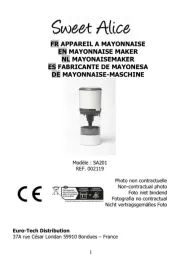
15 September 2025

15 September 2025

15 September 2025

15 September 2025
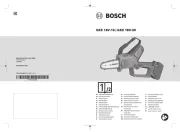
15 September 2025
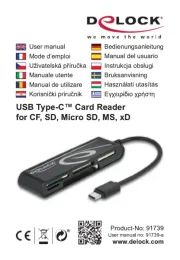
15 September 2025

15 September 2025
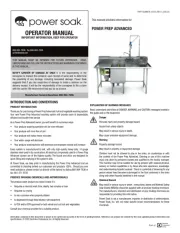
15 September 2025

15 September 2025
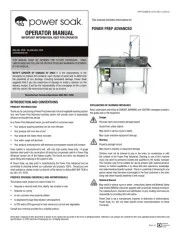
15 September 2025



